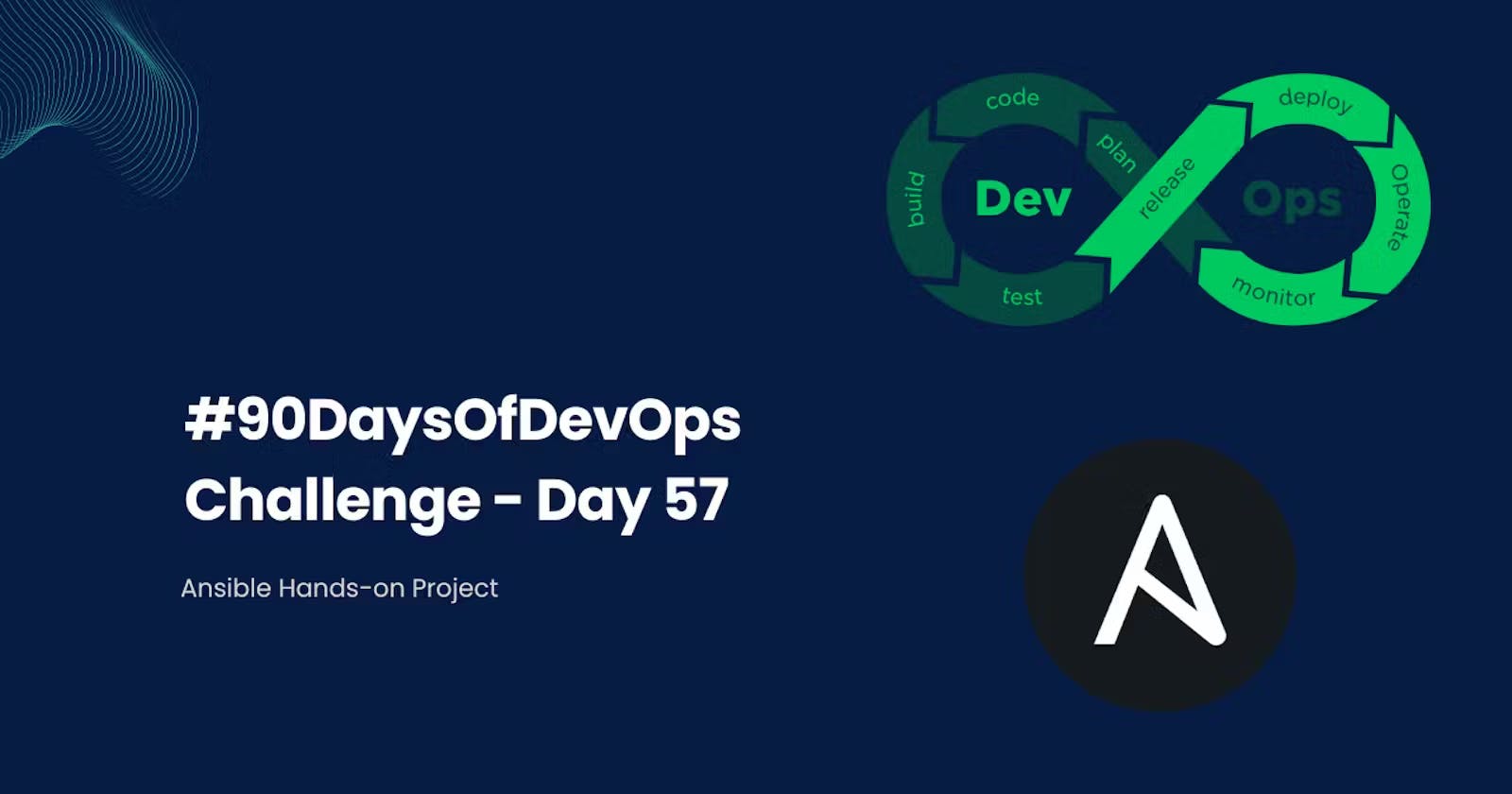This is#90DaysofDevopschallenge under the guidance ofShubham Londhesir.
Introduction:
Welcome to Day 57 of our journey into DevOps. Today, we're focusing on Ansible, a tool that's reshaped the landscape of automation with its simplicity and efficiency. Over the last few days, you've seen Ansible's potential. Now, let's dive deeper with hands-on activities to solidify our understanding.
Understanding Ansible
At its core, Ansible is an automation engine. It automates cloud provisioning, configuration management, application deployment, intra-service orchestration, and many other IT needs.
Why Ansible? It's simple, efficient, and requires no agent installation on remote systems.
Core Components:
Playbooks: YAML files that describe the tasks to be done.
Modules: Units of scripts that Ansible executes.
Inventory: A list of managed nodes (servers).
Setting Up Your Environment
First, ensure Ansible is installed on your control machine—the computer from which you'll run all commands.
Hands-on Exercise: Deploying a Web Server
Objective: Use Ansible to deploy and manage an Nginx web server on two remote servers.
Step 1: The Inventory File
Ansible communicates with nodes listed in an inventory file, typically named inventory.ini. Here's an example:
iniCopy code[webservers]
server1 ansible_host=192.168.1.100
server2 ansible_host=192.168.1.101
[webservers]: A group of servers under the label "webservers".ansible_host: Specifies the IP address of the server.
Step 2: Crafting Your First Playbook
Create a playbook named nginx_setup.yml. This file instructs Ansible on what to do.
yamlCopy code---
- name: Setup Nginx on Webservers
hosts: webservers
become: yes # Use superuser privileges
tasks:
- name: Install Nginx
apt: # The module for installing packages on Debian/Ubuntu
name: nginx # The package name
state: present # Ensure the package is installed
- name: Start Nginx
service: # Manage services on the node
name: nginx
state: started # Ensure Nginx is running
- name: Deploy Index Page
copy: # Copy files to the node
dest: "/var/www/html/index.html" # Destination path
content: |
Hello, Ansible! # Content of the file
- YAML: Ansible playbooks are written in YAML, a human-readable data serialization language.
Step 3: Running the Playbook
Execute the playbook with the command:
shellCopy codeansible-playbook -i inventory.ini nginx_setup.yml
Step 4: Verifying Your Setup
Check if Nginx is serving the deployed page by navigating to http://<server-ip> or using curl:
shellCopy codecurl http://192.168.1.100
You should see "Hello, Ansible!" indicating success.
Expanding Your Knowledge
Dynamic Inventories: For scalability, Ansible can use dynamic inventories to automatically identify nodes based on the environment.
Roles: For organizing complex playbooks, roles group tasks, files, and templates for a specific purpose.
Ansible Galaxy: A community hub for finding and sharing Ansible roles and collections.
Conclusion
Today's session illustrates Ansible's role in simplifying IT automation. By mastering Ansible, you equip yourself with a versatile tool capable of handling a broad range of automation tasks with elegance and simplicity. Continue exploring and experimenting with Ansible to unlock its full potential in your DevOps toolkit.
